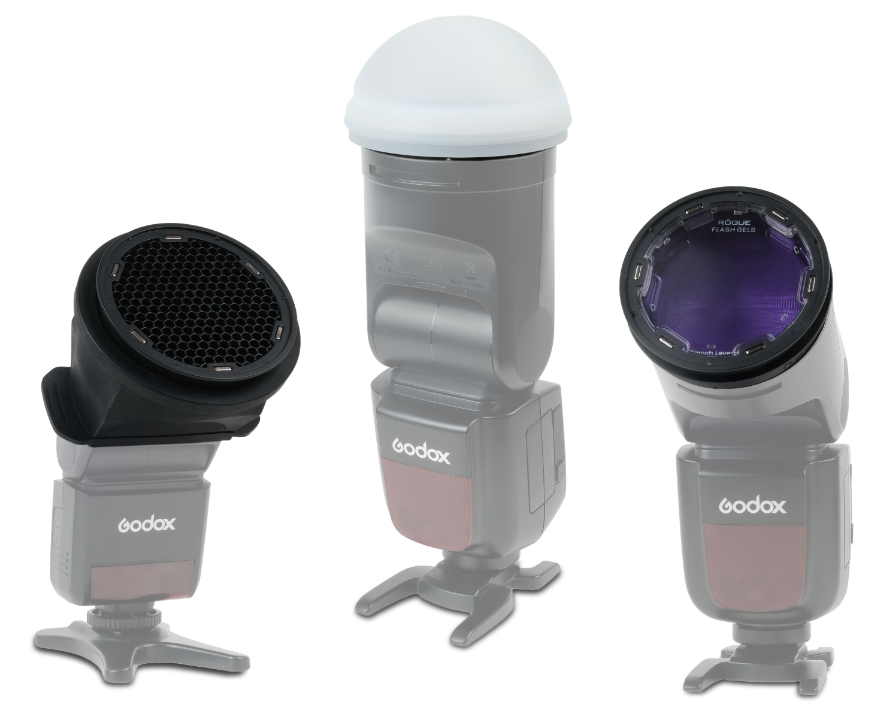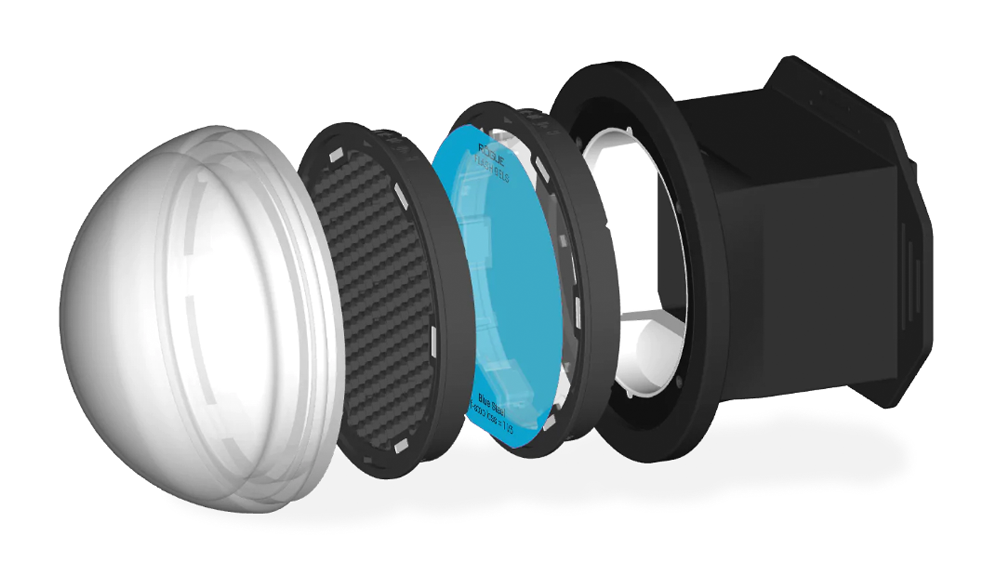Easy-to-Use and Robust Light Modifiers
Review by Erik Vlietinck
Best known for its FlashBender range of products, Rogue Photographic Design has released a new set of Rogue Round Flash Magnetic Modifiers, with adapters for regular and small rectangular flash heads. These products have superior resistance against wear and tear.
As their name suggests, the compact and lightweight Round Flash Magnetic Modifiers attach directly to round flashes. Rogue concentrated on the most popular flashes currently on the market, i.e., Godox, Geekoto, and Westcott. If you happen to have Profoto A10 or an A1 or A1X, you’ll need the Rogue PF Adapter.
The Magnetic Modifiers come as separate products or as a kit that includes a pouch to hold everything. Gels are stored in the typical, Rogue nylon padded envelope with a Velcro closing strip.
The first thing you’ll notice is the quality of the materials. Next, the translucent white silicone of the Diffuser Dome is neutral when measured with a color meter. The silicone rubber in the Adapters for rectangular flash heads is thick, and looked like it was impossible to stretch them to fit. Tests with a Mecablitz Metz 64 AF-1 and a LumoPro LP180 showed that, although the former is not as robust as the latter, there’s a small risk in breaking things. You do need to wiggle the adapter in place while firmly holding the head.
Once the adapter is in place, it’s easy to remove but, if you use a flash regularly with modifiers, I’d leave it on permanently. That does mean you’ll need to reserve a bigger space for these flashes in your camera bag, though, as the adapter adds to the bulk.

My next focus was on the magnets, and they’re strong. You need to use your fingernails to pry off the Gel Lens from the Diffusion Dome or the hexagonal Rogue Flash Grid 45 filter. The magnets themselves are embedded in the polycarbonate plastic of the filters. Polycarbonate is tough.
[Note: Polycarbonate was the material used for the first iMac (the colorful round model with a built-in CRT screen). It’s so tough that, when I exchanged that iMac for a Power Mac and accidentally dropped it on a concrete floor, the plastic corner only got chafed, but didn’t break or crack.]
With the magnets glued and embedded inside the material, I don’t think they’ll ever come loose, no matter how hard you need to pull on the accessories to get them off.
As well as the idea of using polycarbonate as plastic, another indication of good design is how the Gel Lens fits together and the gels “stick” to the lens. The Gel Lens, including the transparent disc on which the gels rest, is made of the same polycarbonate, which is sensitive to static electricity. The lens has a small recessed edge in which the round gels fit. Because of the static electricity, the gels are attracted to the lens surface and automatically “fly” into the recessed area, staying put until you remove them.
All those little details show how much attention went into the development of the Rogue Round Flash Magnetic Modifiers. It also implies that you don’t need to worry much about being careful when using the system. It will withstand the daily handling of photography under time pressure.
As for the adjustment or colorizing accuracy of the accessories, I wouldn’t have expected anything less from the company that designed the ExpoDisc white balance filter and the velcro Rogue FlashBenders than delivering what it says on the box. And so they do!
The kit that I tested costs $129.95, which comes with an Adapter. Individually, the Adapter (regardless of type) is $34.95; the Grid 45 and Gel Lens are $29.95 each; the Diffuser Dome is $39.95; and the Ultimate Portrait Collection or Color Correction Collection Gel Kits are $34.95 each. ■






